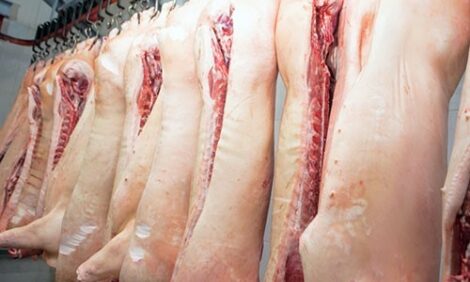



September Hog and Pig Report Summary
US - The much anticipated USDA September Hog and Pig report, released on September 26th, indicated that the swine industry has accelerated its reduction in production potential, write John Lawrence and Shane Ellis.The national herd is now at 68.7 million head, up 2 percent, the national breeding herd is down 2.6 percent, and the supply of market hogs in up 2.5 percent. The supply of market hogs in the fourth quarter will be up about 3 percent. Although slaughter volumes will be high, the packing sector has demonstrated that it has adequate capacity. Table 1 contains a summary of the report with the percentage change in inventories from a year ago.

Producers have been cutting back inventories and adjusting their farrowing plans in an attempt to improve market prices and potentially preferable market timing. As evidenced by the difference between the reduction of sows and farrowing intentions in the coming months, there may be some discrepancies in the report created by adjustments in breeding and farrowing management plans. For example, Iowa’s breeding herd was unchanged from a year ago, but Jun-Aug pig crop was up 7.4 percent and Sep-Nov farrowing intentions are down 5.6 percent.
Although average production in the fourth quarter will be higher than last year, there will be a tapering down of hog supplies until December when slaughter levels will be very near those of last year. Production in 2009 will start out at levels similar to those of last year but will continue to decline throughout the year. There is a potential for pork production to decline by more than 5 percent in the summer months of next year. Table 2 contains a summary of forecasted prices from ISU, changes in pork production, and the Iowa average hog price based on the futures marker prices and previous year Iowa basis. Although there were some short periods of phenomenal hog prices in 2008, such as the record high prices seen in August, market prices are expected to be a little more stable in the coming year.

The past year has been difficult for pork producers. Higher feed and energy prices have caused cost of production to increase 27% from August 2007 to August 2008. During that time selling prices ranged from their lowest level since 2003 in November to a record high price in August followed by the largest one week drop in prices since the early 1970s. Producers have operated at a loss in 9 of the past 11 months and losses are forecast to continue until April or May of 2009.
Part of the financial losses can be attributed to larger pork supplies. Pork production for the 12 months September – August was 8.7% higher than the same period the year before. Producers had some relief from red ink in August. However, the higher costs of production kept returns relatively small in spite of the record prices.
The bright spot to date in the hog market has been pork trade. The weaker US dollar through early 2008 limited imports and helped exports. January through July pork exports are up 71% from the year before. Imports of pork into the US have been lower this year. Thus, in spite of the higher production, the amount of pork on retail shelves has been about the same as a year ago. Domestic availability in June was 27% less than it was in January. As a result domestic prices have been stable to higher and export demand has fueled hog demand.
China has been the fastest growing market this year. It experienced disease problems in 2007 that limited its supply of domestic pork. The economic activity of hosting the Olympics bolstered demand encouraging more purchases from the US. Japan, Mexico and Canada continue to be major markets for US pork.
The supply of hogs and pigs from Canada has slowed its pace. In particular, the number of hogs entering for slaughter is lower than the year before and pig imports have slowed. Herd liquidation in Canada has led to fewer total pigs and concern about how Country of Origin Labeling (COOL) will be implemented has also reduced imports.
In summary, hog prices are expected to stay below cost of production through the fall, winter and early spring. Prices should rally in April or May to return producers to profitable conditions. Producers should develop a survival strategy and plan to weather the next 6-8 months. Look for opportunities to lock in a margin in grain and hog prices. Also, to remain flexible, consider financing part of their line of credit as a term loan at favorable rates to spread recent losses over more time to maintain a favorable working capital position.
Further Reading
| - | You can view the full report by clicking here. |
| - | You can view the full USDA Quarterly Pigs and Hogs Report - September 2008 by clicking here. |








